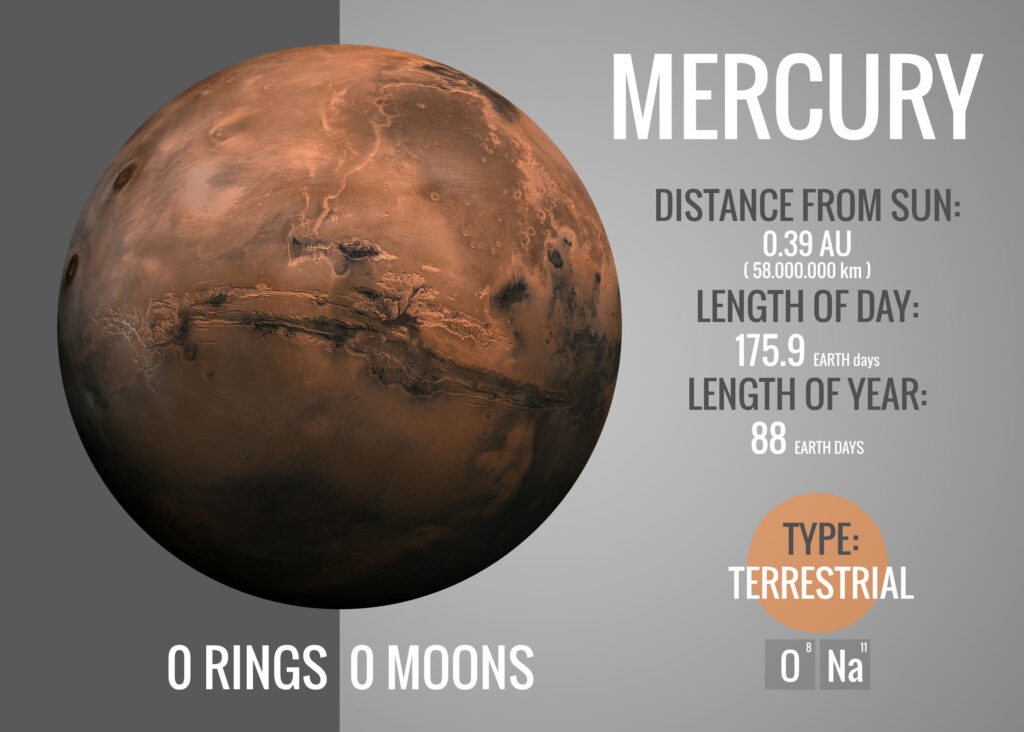Mercury is the closest planet to the Sun and the smallest in the Solar System. It is a rocky, terrestrial planet with a heavily cratered surface, resembling Earth’s Moon. It has a diameter of about 4,880 kilometres.

Mercury’s elliptical orbit and slow rotation lead to a phenomenon where the Sun appears to briefly reverse direction in its sky at certain times. Despite being the closest planet to the Sun, it is not the hottest; Venus holds that title due to its thick, heat-trapping atmosphere.
Key Characteristics:
- Distance from the Sun: Approximately 57.9 million kilometres.
- Orbital Period: Mercury completes one orbit around the Sun in just 88 Earth days.
- Rotation: It rotates on its axis very slowly, taking about 59 Earth days for one full rotation. This results in long days and nights.
- Temperature: Extreme temperature variations occur due to its lack of atmosphere, ranging from -173°C at night to 427°C during the day.
- Atmosphere: Mercury has a very thin exosphere composed mainly of oxygen, sodium, hydrogen, helium, and potassium.
Mercury’s surface is marked by:
- Craters: Formed by meteor impacts, with notable craters like the Caloris Basin.
- Plains: Smooth, flat areas likely formed by ancient volcanic activity.
- Scarps: Steep cliffs formed by the planet’s crust contracting as it cooled.
Mercury has a large iron core, which takes up about 85% of its radius, making it the most metal-rich planet in the Solar System. Its magnetic field, though weak, is evidence of a partially molten core.
Mercury Exploration
Mercury has been studied by space missions such as:
- Mariner 10 (1974–75): The first spacecraft to visit Mercury, mapping about 45% of its surface.
- MESSENGER (2004–2015): Provided detailed data on Mercury’s surface, composition, and magnetic field.
- BepiColombo (launched 2018): A joint mission by ESA and JAXA, currently en route to further explore the planet.
Mercury remains a fascinating object of study for understanding the formation and evolution of rocky planets in our Solar System.

